19 Most Mind-Bending Surrealism Art Examples in 2025
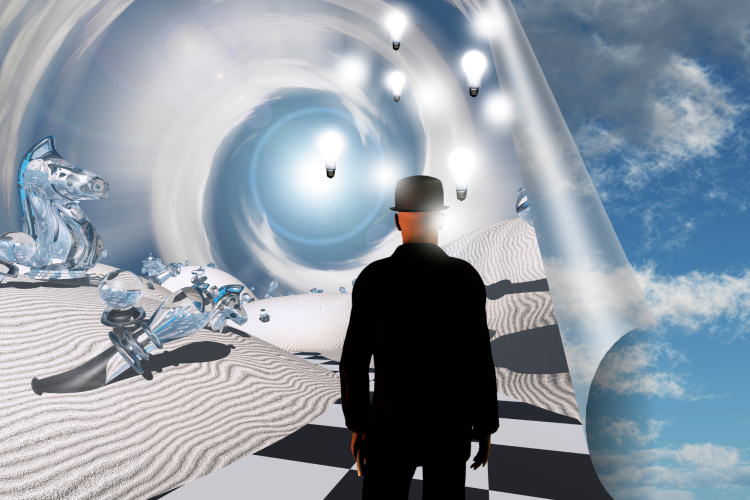
In this article, we will explore Surrealism art. This includes Surrealism art characteristics, its history and the most famous Surrealist artists and the best surrealist paintings and artworks.
This guide is perfect for those who want to learn more about Surrealism art history. If you want to not only understand art but paint like an expert, there are many paint and sip ideas, where you can learn how to paint a certain way while having fun with others. This is a great way to understand how to find your art style.
Let's start from the beginning to understand the origins of Surrealism art.
Jump to Section
- What is Surrealism Art?
- What Are Surrealism Art Characteristics?
- Who is the Most Famous Surrealist?
- 19 Best Surrealism Art Examples
What is Surrealism Art?
So, what does Surrealism mean in art? What are the characteristics of Surrealism?
To provide a Surrealism art definition, we should start with the word, "surreal." A poet called Guillaume Apollinaire coined this word to describe a reality that is beyond or beneath our conscious reality.
Surrealism started as a literary movement in the 1920s when French poet André Breton wrote the “Manifesto of Surrealism.” He was influenced by famous neurologist and psychologist Sigmund Freud’s work and the studies of Carl Gustav Jung.
Surrealism in literature is where its influence began. But this quickly became an art movement as the images of these theories were asking to be made real. Alongside, the connections to Freud’s theories, Surrealism rejected rationality and the accepted way of life.
Members of this movement understood that humans were not just rational creatures, but ones with an irrational subconscious mind full of creativity. For example, Freud deemed the unconscious mind as expressing itself through dreams and this is possible to see in Surrealism art.

The movement was also a positive expression of irrational creativity against the rationalism that brought the world into World War 1. As much as Surrealism art was about tapping into creativity that was often left untouched, the movement was also about creating contradictions in everyday life. Therefore, the idea was that by creating irrational-like paintings, contradictions would appear in society and influence revolution.
Lastly, Surrealism is about bringing unconscious dreamlike creativity into the world through various art forms. An easy-to-understand Surrealism definition is: Surrealism is about expressing personal imagination in the everyday normality of life.
What are Surrealism Art Characteristics?
Now that you know what Surrealism art is, you might ask, "What are the characteristics of Surrealist art?" Firstly, like Surrealist literature, the point is to release unconscious thoughts for unlimited creativity. Therefore, Surrealism art is about individual creativity making the creation and interpretation of the art unique to the individual.
Secondly, Surrealist art requires research and experimentation as Surrealism art is a way to encourage investigation into the self. Due to this, Surrealist art is defined by its contentions and disagreements as the movement was defined by individual opinion and creativity.
Lastly, Surrealism art is defined by the amount of the various painting techniques used. This is because it encourages self-discovery, therefore the main trait which connects Surrealism art is not the techniques but the thinking and method behind the art. However, there are techniques that are heavily connected to Surrealist art.
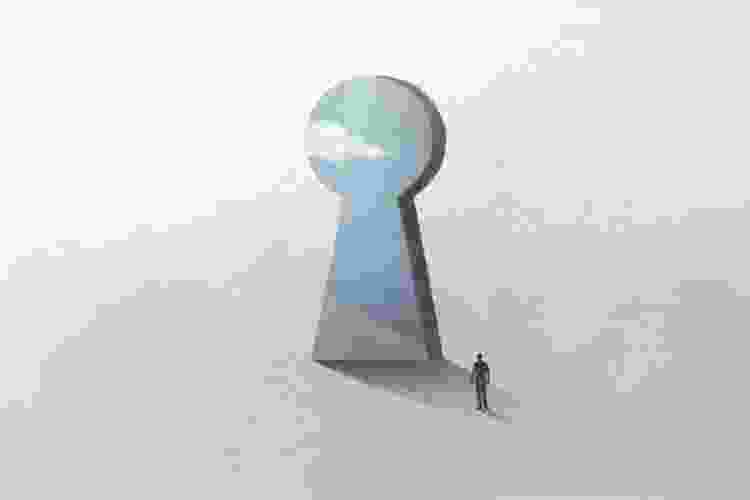
One Surrealist art technique is grattage, a French word used to describe the method of scraping a painted canvas to create visual texture. Another is frottage, where a soft pencil is used over a surface to make more visible parts of the texture left on the surface of the painting.
Automatic drawing, is a method that describes the spontaneous recording of images that appear in the unconscious mind of the individual. It uses objects to create unfamiliar structures with well-known objects to visualize the unconscious mind.
"Exquisite art," is where one artist draws a part of the human body, then they fold it and pass it along to the next artist — with only the end of the lines exposed. The next artist then draws another part of the human body extending from those lines, resulting in an absurd image.
Finally, lithography, sculpting, film and photography were also used by Surrealist artists.
What is the Difference Between Dadaism and Surrealism?
Both Dadaism and Surrealism were strong art movements in the 20th century with key differences. Dadism came first and Surrealism was influenced by the movement.
Dada was founded by Hugo Ball in 1916 Zurich, Switzerland. Sculpture, assemblage and collage were all art forms in Dadaism art. Surrealism was founded in 1924, in Paris by André Breton.
While Surrealism was about using unconscious creativity to inspire change, Dadaism was an anarchic response to World War 1. Dadaism questioned the trust in the systems that allowed the horrors of the war to happen by ludicrous and absurd art to question the accepted.
Both art movements used disjointed imagery like assemblage, but they differed in how they did this. Dadaism pulled apart common objects to show their meaninglessness. An example of this is the art of German Dada artist Hannah Höch. Meanwhile, Surrealism art was about replacing common objects to transform them into something new. Surrealism art aims to show a hidden meaning behind everyday objects.
Lastly, Surrealism is more inward-looking instead of focusing on the broken systems around the individual. For example, famous Surrealists Salvador Dalí and René Magritte analyzed their own, and each others', dreams.
Who is the Most Famous Surrealist?
Surrealism art history begins in the 1920s and finishes more or less in the 1960s. Therefore there are a lot of artists who are in this movement.
Salvador Dalí is likely the most famous surrealist artist. He was born in 1904 in Figueres, Spain and was influenced by Freud’s writings of the 1920s, the beginning of the Surrealism art period.
His paintings depict a distorted dream realm and combine these with realistic depictions. The Persistence of Memory is a very famous piece of work, which we will see in our list of the best Surrealism art examples. He made two Surrealist films and was known for publicity stunts as well.

Who are the Other Top Surrealist Artists?
Andrė Breton created Surrealism and is undoubtedly very important to the movement. As Surrealism is about a vision of life over technique, Surrealism art can differ significantly.
Therefore, there is a wide range of amazing artists in this movement like René Magritte, Joan Miró, Max Ernst, Frida Kahlo, Diego Rivera and Meret Oppenheim. Visual artists like Giorgio de Chirico and Pablo Picasso embraced Surrealism later on in their careers.
Next, we will provide Surrealism art examples that are easy to understand.
19 Best Surrealism Art Examples
1. Salvador Dalí, The Persistence of Memory (1931)

Somewhere on the Catalan shore, Dalí depicts an abstract dreamworld with everyday objects in strange places. The famous melting clock is synonymous with Surrealism and is one of the most famous paintings in the world.
The large nose from the self-portrait from The Great Masturbator is also in this painting. Dalí continued to create works of art based on the melting clock.
2. Rene Magritte, The Treachery of Images (1928)
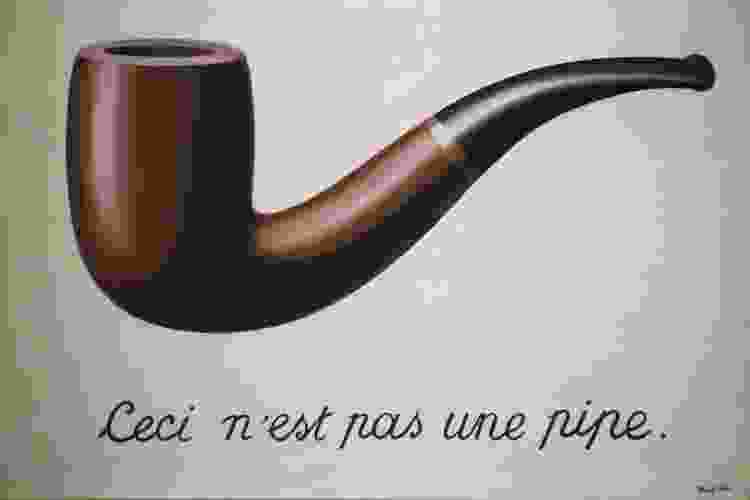
This painting is of a realistic everyday wooden pipe. But underneath the wooden pipe, it famously says in French, "Ceci n'est pas une pipe," or "This is not a pipe."
Magritte offered a paradox by making this contradiction to get the viewer to think about how language and everyday objects interact.
3. Joan Miró, The Hunter (Catalan Landscape) (1924)
Another famous Catalonian painter, Miró is a very famous Surrealist artist and like Dalí, he created many Surrealist Catalonian landscapes. This painting depicts one of these landscapes with peculiar orbs, disembodied animals and humans alongside some out-of-place objects.
The figures and objects seem to be moving and floating, making it feel like the painting itself is moving. The word ‘sard’ is in the background which is short for the national Catalan dance, "Sardana."
4. Frida Kahlo, The Wounded Deer (1946)

Kahlo’s "The Wounded Deer" shows exactly that, a hurt stag, but with a Surrelaist twist. It's also a self-portrait where Kahlo's head is on the body of the wounded stag.
The painting was created after her unsuccessful spinal surgery to show her pain to the viewer. There is a possibility that she chose to represent herself as a half-male deer to represent her bisexuality.
5. Meret Oppenheim, Object (1936)
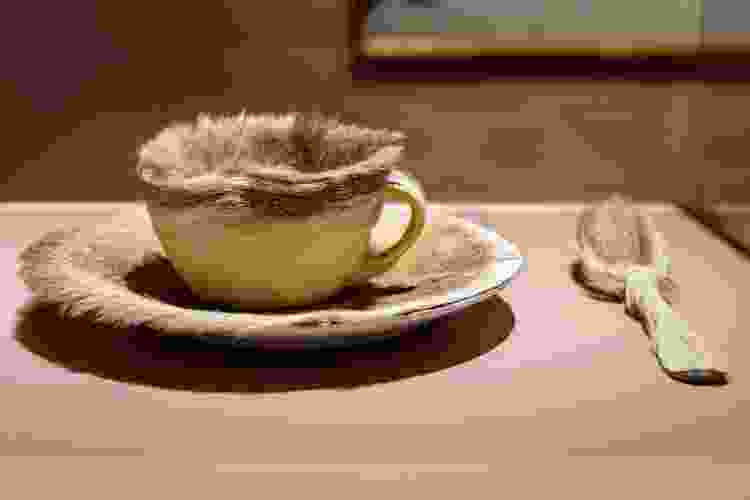
Oppenheim’s Object was created in the 1930s, only a few years before the Second World War. This painting was inspired by a conversation with Dora Maar and Pablo Picasso.
The painting shows a fur-covered cup and saucer. Oppenheim had a fur-covered bracelet which Picasso admired and he thought about how anything could be covered in fur and took inspiration from this.
6. Man Ray, l’Heure de l’Observatoire: les Amoureux (1932-1934)
This painting shows large lips amongst a cloudy sky. There is a sense of sensuality with the red lips of his former lover, Lee Miller.
The painting was created after their break-up and represents the two bodies of Lee Miller and Man Ray.
7. Rene Magritte, La Decalcomanie (1966)
The man with the bowler hat is an image used a lot by Magritte. The man stares at the sea with an absent space, where there is a beach with little activity.
Looking at this painting makes it feel like time has stopped, providing a sense of stability. The silhouettes are not exactly the same as part of the curtain is distorted in the man’s shape.
8. Wifredo Lam, Rumblings of the Earth (1950)
This painting represents the artist's feelings towards his country’s traditions and the European artistic legacy with his own goals. He refers to Picasso’s "Guernica" but transforms Picasso’s message by replacing the horse with a spectral presence with a knife.
This painting depicts revolutionary violence, which is a means of liberation.
9. André Breton, Egg in the Church or the Snake (date unknown)
Not only a poet, Breton was a Surrealist artist. Breton laid the foundations for Surrealism art. While this is a collage, it questions the role of the author, expanding the use of photos as an experiment.
The dream-like feel and symbolic language tackle the question of the repression of sexual desire in Christianity.
10. Salvador Dalí, Metamorphosis of Narcissus (1937)

This Dalí masterpiece highlights how important his work is to understanding Surrealism art style. The "Metamorphosis of Narcissus" shows the transformation of Narcissus, the famed hunter from Greek mythology who fell in love with his own reflection — where the term "Narcissism" comes from.
He is punished to look at his reflection till he dies as forced by Nemesis who wants revenge. At the same time, he is transforming into a flower. This artwork captures the moment of transformation. This is part of Dalí's paranoiac-critical experiments where he wanted to bring this myth in line with his unconscious mind.
11. Luis Buñuel, Un Chien Andalou (1929)
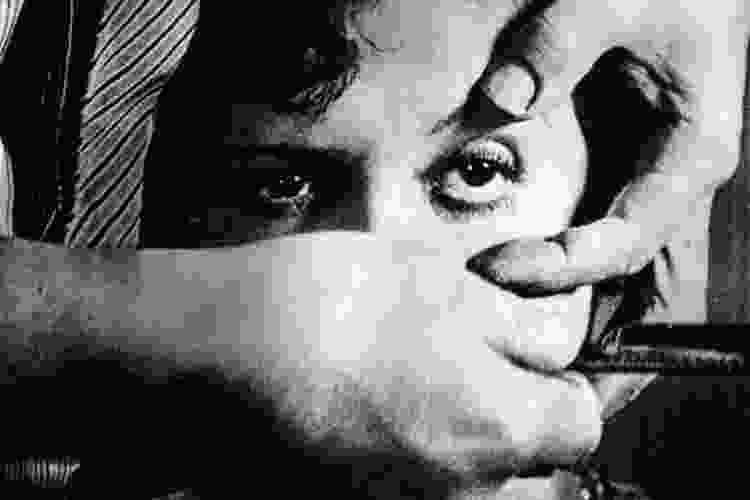
Un Chien Andalou is a 1929 short film by Luis Buñuel. Salvadore Dalí co-wrote the screenplay and both took inspiration from their dreams. This art film is about a relationship between a man and a woman that is full of emotions for each other, yet there is no clear explanation as to why.
Its logic is like a dream, it has no conventional plot and feels very much like Surrealism art. Therefore, if you want to understand Surrealism art with a visual definition, then you should watch this film. Warning, parts can be difficult to watch, especially the famous scene of the slicing of the eye (which was actually a horse's eye, not a human).
12. Andre Masson, Battle of Fishes (1927)
Masson’s "Battle of Fishes" represents his feeling that the human condition is characterized by violence and the need for survival. Masson was wounded in the First World War, which shaped this painting.
The image likely shows a savage battle underneath water between fish.
13. Max Ernst, The Barbarians (1937)

Max Ernst was not always a Surrealist, he was a Dada painter before. Freud and Breton’s theories shaped his work to become some of the most influential Surrealism art.
This painting depicts two sci-fi-esque large creatures, who look similar to Godzilla. This artwork is inspired by his childhood memories, the unconscious mind and pagan mythological symbols.
In this artwork, the ego, super-ego and id, from Freud’s theories on human personality, are depicted through the creatures.
14. Joan Miró, The Tilled Field (1923-24)
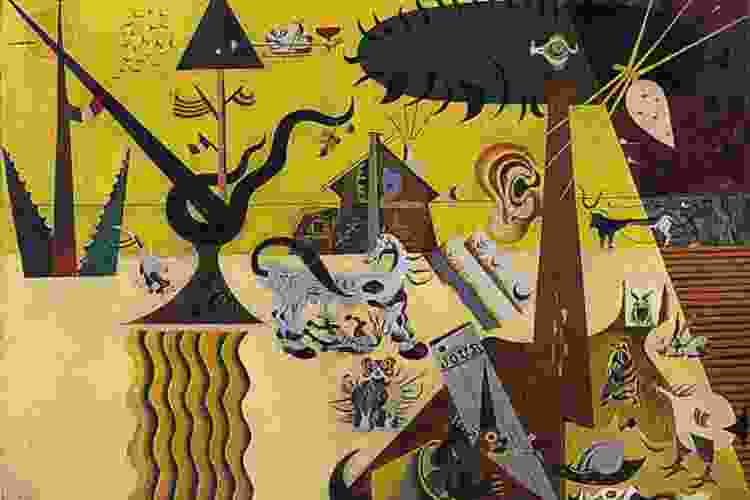
"The Tilled Field" is another amazing piece of work by Miró. This painting reflects not only the Catalan landscape but also politics in 1920s Spain through his imagination.
Free spirit ideals of both the present and past are presented here to contest the dictatorship in Spain. There are also important messages about Catalan’s autonomy here, which was not, and is still not, recognized by the Spanish government.
15. Rene Magritte, The Son of Man (1964)
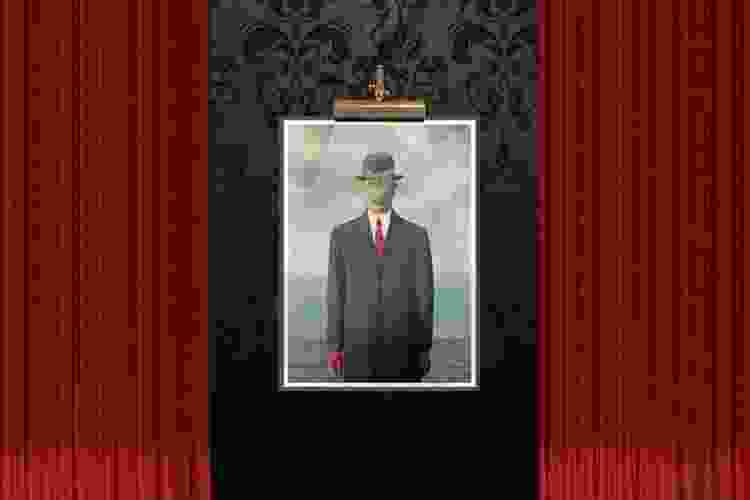
This painting was initially meant to be a portrait of Magritte’s friend, Harry Torczyner. But it transformed into representing or hiding the nature of the true identity of Torczyner.
The apple covering his face makes the viewer think about why it is covered and what is behind the apple.
16. Salvador Dalí, The Great Masturbator (1929)

Dalí’s "The Great Masturbator" reflects his passion to analyze unconscious aspects of the self and Freud’s theories about personality and repressed sexual mechanisms.
This painting shows Dalí’s overgrown ego in a surreal dream-like landscape. This painting reflects both desires, dreams and fears of what is unknown.
17. Alberto Giacometti, The Palace at 4 a.m. (1932)
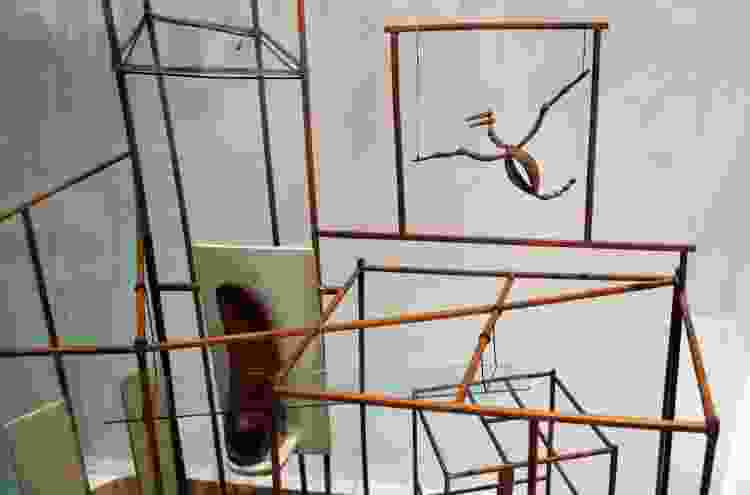
"The Palace at 4 a.m." is a Surrealist sculpture, that shows the influence of Dadaism on Surrealism art. Alberto Giacometti’s work here represents his time with a woman for six months, which pushed him into a state of enchantment.
It looks like a model of a dollhouse and on top of the white pedestal is a black wooden disk. A thin rectangular of wood sits on the disk. This shows how despite the numerous types of art in the movement, Surrealism art examples are easy and fun to understand.
18. Yves Tanguy, Mama Papa is Wounded (1927)
Yves Tanguy’s masterpiece neatly illustrates what is wonderful about Surrealism art style. The painting shows influences from Freud and the power of symbols.
Tanguy did psychiatric case studies with war veterans and this artwork puts their thoughts in an art form. The painting represents broken family relations due to World War 1 and the damaged masculinity of fathers.
19. Leonora Carrington, Ulu's Pants (1952)
Leonara Carrington was a writer, painter, weaver and mother. She is a key part of the Surrealism art movement.
In this painting, she explores Celtic mythology and Mexican cultural tradition to create shape-shifting and monstrous characters to highlight self-analysis through symbols. Theories from across the world meet in this painting.
In this article, we have defined Surrealism art, explained its history, the key artists in the movement. We also highlighted some of the best Surrealist pieces of art. From discussing the Surrealism time period to Surrealism in literature, film and art, we hope this has widened your comprehension of Surrealism art.
If this has widened your interest in art and painting, have a look at various aesthetic painting ideas to shape your creativity. There are also many paint party ideas for adults for those who love painting with friends.
Painting as an individual in a group is a great way to relieve anxiety, limit stress and create emotional connections with others. It is a wonderful experience to paint with others who are all presenting different creative ideas.
For even more fun art and sip ideas, check out other experiences happening on Classpop!

